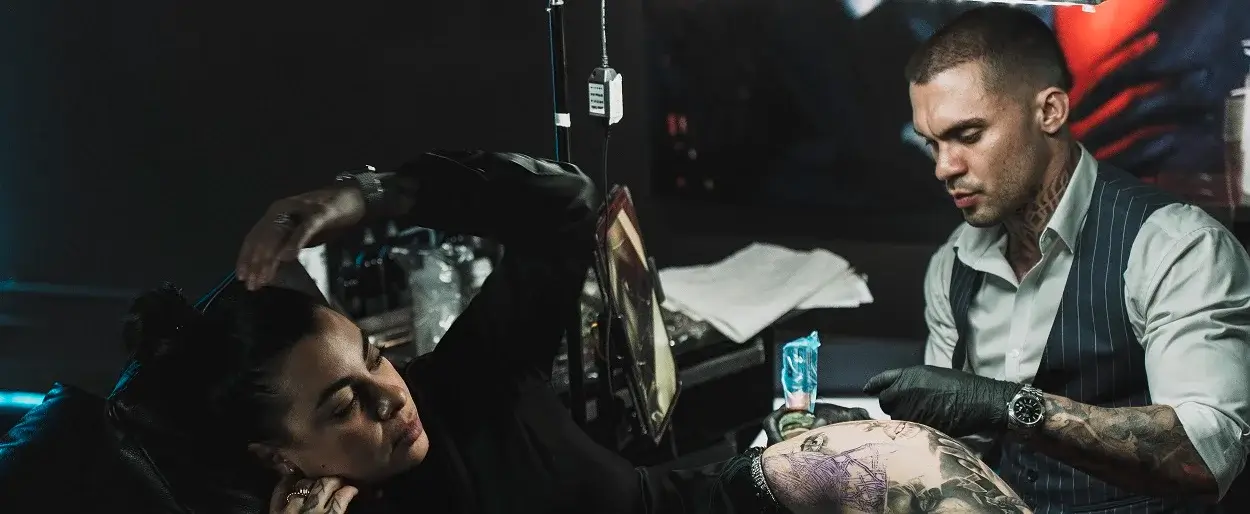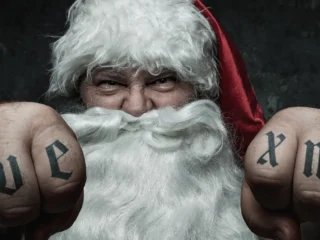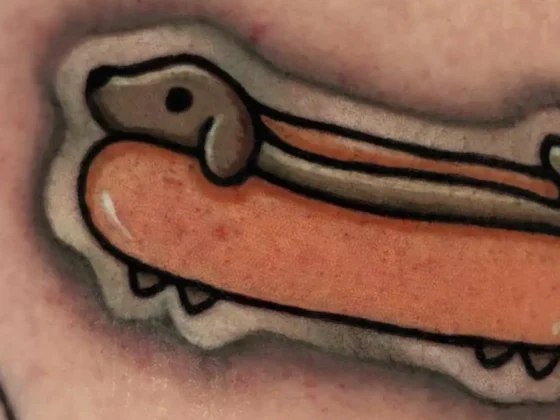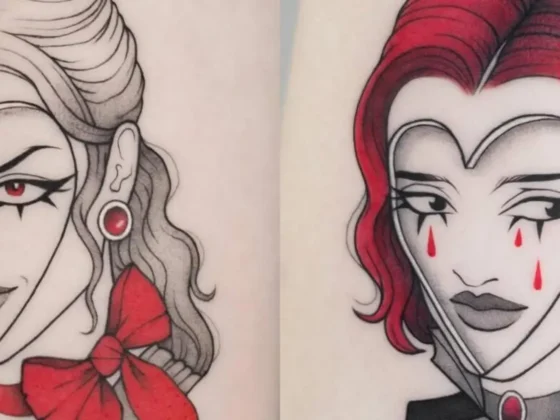Inked Mag Staff
July 6th, 2020
Life’s Surreal
From Cuba to Venezuela, Roberto Carlos Sanchez Mesa has traveled the world with his tattoo machine in hand.
Roberto Carlos Sanchez Mesa’s path to becoming a tattoo artist would have been unthinkable decades ago, but as the industry evolves, his story is becoming common. After pursuing a degree from art school, Mesa brought the fundamentals of painting into his work on skin. His journey wasn’t straight and narrow—he spent many years learning tattooing through trial and error, but today he’s one of the most sought-after artists in Caracas, Venezuela. We caught up with Mesa to learn how his love for art began, what inspired him to move to Venezuela, and what advice he’d give to aspiring artists.
Take us through your upbringing in Cuba and how it led you to become a tattoo artist.
From an early age I’ve always had a great affinity for the arts, and drawing was one of the things I enjoyed the most. At the end of my teenage years, I had the opportunity to take the aptitude tests to get into an art school in the city of Santiago, Cuba, and since then I have dedicated my whole life to art. From those years of studying, where drawing and painting were a constant exercise, as well as reading art history books, visiting galleries and exhibitions and living in that environment, I was able to get tattoo magazines that gave me a lot of motivation. At that time, Robert Hernández gave me inspiration and the desire to experiment. This led me to build my first machine, which I made with a radio cassette engine, a Sharpie marker and pen tips.
Do you think art school helped your tattoo career?
Art school was crucial for me. Learning about the aesthetic content, language of the artwork and its symbolism has helped me to develop as a tattoo artist.
How would you describe your tattoo style and who are some artists that inspire you?
Nowadays, realism and surrealism determine the course of my work. Today, tattooing is constantly evolving, so defining an artist’s style can be a bit difficult.
Hernández was, and still is, a driving force in my career. Artists like Dmitriy Samohin, Jeff Gogue, Paul Booth, Nikko Hurtado, Sergio Sánchez, Yomico Moreno, Darwin Enriquez and Emersson Pabon also inspire me.
What’s your process for designing a tattoo and how long do your sessions typically take?
I really like to create stories. From the moment a customer tells me their idea, I try to translate each word into an image and in this way, I begin my creative process. Each session takes approximately six to eight hours, which allows me to sketch the work and take into account its complexity. I like to tattoo the way I draw and paint, so the first session is used to sketch the idea on the body and after the healing process, I emphasize and deepen the contrast, nuances and depth in color or shadows.
What role does texture play in your work and what are some of your favorite textures to create in a tattoo?
One of the things that I find most interesting when painting are textures, and this has been something I’ve tried to transfer to my tattoos. I consider it a very important additive within the work—the visual texture forces the viewer to stop and, psychologically, it causes an impression. Achieving this on the skin is very interesting and becomes a challenge, as I take into account the canvas. My favorite textures to tattoo are found in wood, dried leaves and corroded material, among others.
What advice would you give to artists who want to tattoo like you and how long did it take to get to where you are now?
Art requires constant study and dedication. In the case of tattooing, painting and drawing are fundamental, because they give artists a greater understanding of the elements of visual language and the treatment of volume, color, light, shadow, proportion, composition, etc. Searching the work of prominent artists in different styles and attending events or seminars where you can better observe the processes of art is crucial. This is the first thing those who are starting in this profession must do and all of us who are already in it should continue. In order to do a good tattoo, you must keep drawing and never get tired of experimenting, studying and researching.
Editor's Picks
Bridging Classical Art and Modern Tattooing
Esteban Rodriguez brings the discipline of classical fine art to the living canvas of skin, creating hyper-realistic tattoos that merge technical mastery with emotional depth.
Show Your Ink Fashions Brings Custom Style to Tattoo Culture
Show Your Ink Fashions creates custom shirts designed to showcase your tattoos as wearable art, blending fashion with personal expression.
The Ultimate “Superman” Tattoo Roundup: Just in Time for Superman’s Return to Screens
With Superman’s big return to theaters, fans are revisiting some of the most iconic ink inspired by the Man of Steel.














